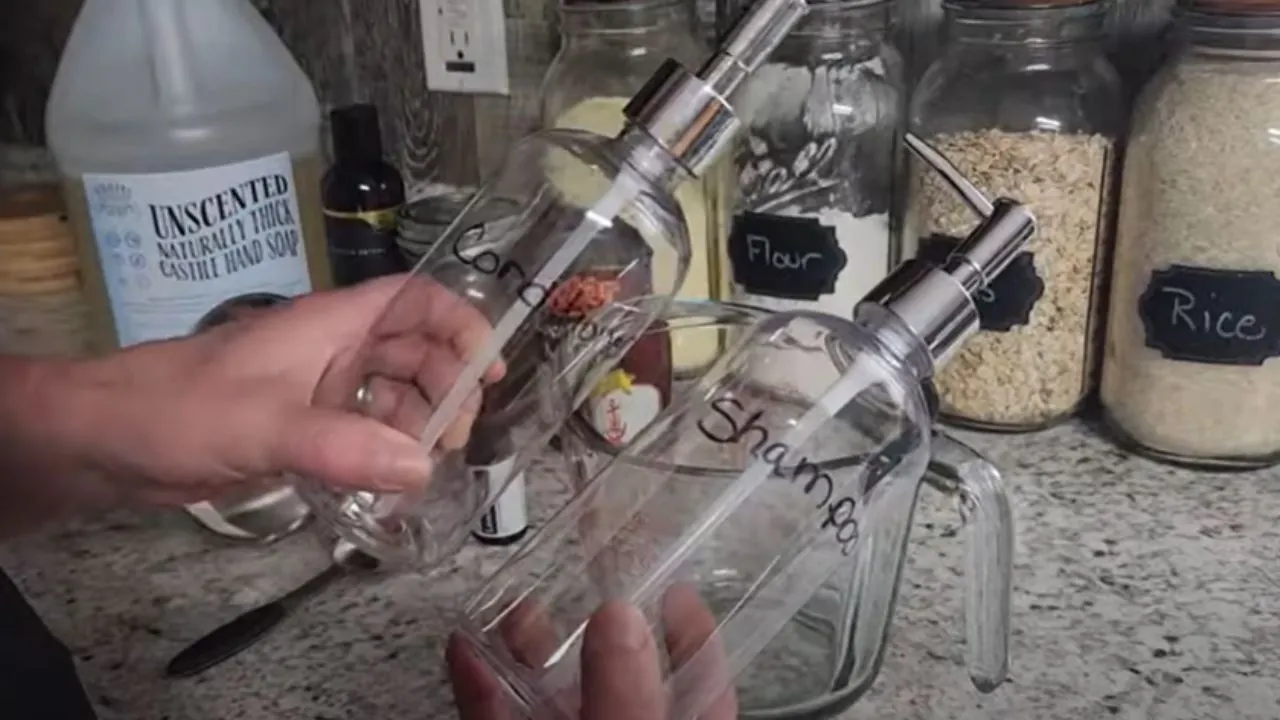As an Amazon Associate, I earn from qualifying purchases
If you’ve never used solid hair products before, you might be curious about how to use shampoo and conditioner bars and whether they’re as good as people say. These little bars have been gaining popularity for good reason; they’re eco-friendly, travel-friendly, and gentle on your hair.
I’ll be honest, when I first tried shampoo bars, I wasn’t sure what to expect, but over time, I’ve learned how to use them correctly to get soft, clean, and healthy hair without the waste of plastic bottles.
In this guide, I’ll walk you through everything you need to know, from what makes a good shampoo bar to how to wash your hair with bar shampoo, even if you have long hair or struggle with finding the right routine.
Additionally, I’ll share tips on selecting the best bar shampoo and conditioner for your hair type, as well as how often you should wash with them. If you’ve ever worried,
“Did a shampoo bar ruin my hair?”
You’re not alone, and I’ll help you avoid those pitfalls too. Ready to dive in and learn how to make the most of your solid shampoo and conditioner? Let’s get started!
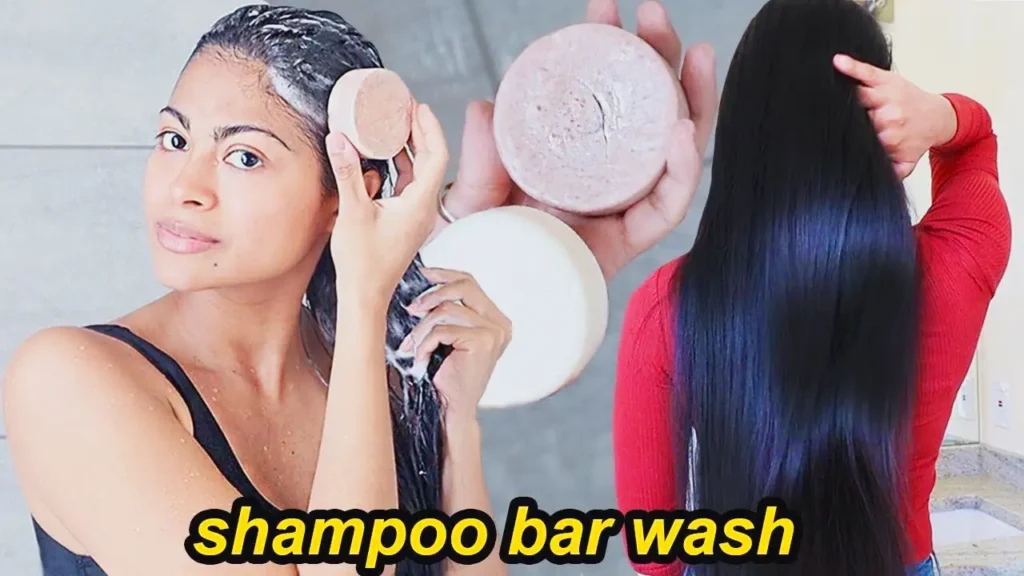
Credit: Doro Cubillo
What Are Shampoo and Conditioner Bars, Really?
Simply put, these bars are concentrated versions of your regular shampoo and conditioner, but without the water and plastic bottles. Think of them as little soap-like bars packed with natural oils, butters, and essential oils designed to clean and nourish your hair.
Unlike liquid shampoos, which are mostly water, shampoo bars are solid and last a long time, sometimes even longer than a couple of bottles!
What makes a good shampoo bar is a balanced formula that gently cleans without stripping your scalp, often made with plant-based ingredients and free from harsh sulfates or parabens. The same goes for solid conditioners, which aim to soften and hydrate your hair without weighing it down.
Using shampoo bars correctly might take a little practice. Using shampoo bars and solid conditioners might seem confusing at first. You can rub the bar directly on your hair or work it up into a lather in your hands before applying. Either way, it’s all about making the most of your solid shampoo and conditioner bars to get the best results.
I’ve heard some people say, A shampoo bar ruined my hair, and I get it; that can happen if the product isn’t the right fit for your hair type or if you don’t use it quite right. But with a bit of patience and by learning how to use conditioner bars properly.
So, whether you have long locks wondering how to use a shampoo bar on long hair, or you’re just curious about how to wash hair with bar shampoo in general, understanding these basics will set you up for success.
Why Switch to Bars? (Pros and Cons)
Switching to solid bars might feel like a big change, but once you understand the benefits (and a few downsides), it’s easier to decide if they’re right for you.
Here’s a quick breakdown based on my experience and what most users discover:
Pros and Cons of Shampoo and Conditioner Bars
Pros
Cons
Pro Tip: If you’re unsure, try learning how to use a shampoo bar on long hair or dry hair specifically; these guides help you avoid common mistakes.
Like anything new, solid bars take a bit of getting used to. But once you find the right one and know how to use it, the benefits usually outweigh the bumps in the road.
How to Choose the Right Bar for Your Hair Type
Choosing the right shampoo and conditioner bar can make all the difference in your hair care routine. When I first started learning how to use shampoo and conditioner bars,
I didn’t realize that matching the bar to my hair type was just as important as using it correctly. It’s not just about the scent or brand, it’s about what your hair truly needs.
If you have dry or curly hair, you’ll want to look for bars packed with moisturizing ingredients like shea butter, cocoa butter, or oils such as argan and avocado. These help soften the hair and define curls without causing frizz.
For oily hair, bars that contain ingredients like tea tree oil, citrus, or clay work well because they help balance the scalp without over-drying it. Many people with oily roots struggle to find the right formula, but a lightweight bar shampoo made for oil control can help.
Just be sure to avoid bars that are too rich in heavy oils or butters, as these may weigh the hair down. If you color your hair, make sure the bar you choose is sulfate-free, color-safe, and pH-balanced. Harsh cleansers can strip color quickly, so stick with gentle formulas that help maintain shine and vibrancy.
Some of the best shampoo and conditioner bars for color-treated hair are enriched with plant extracts and mild cleansing agents.
People with fine or thin hair should focus on light, volumizing bars that clean the scalp without leaving buildup. Conditioner bars should rinse out easily and not weigh the hair down. If you’ve ever felt like a shampoo bar ruined your hair, it could be that you picked one that was too rich for your hair type.
And if you have a sensitive scalp or damaged hair, opt for bars made with calming ingredients like chamomile, oats, or aloe. These ingredients soothe irritation and reduce dryness. If your hair is brittle or breaking, look for repairing formulas with rice protein or keratin.
A common question is, What makes a good shampoo bar? The answer is: one that matches your hair type, uses natural ingredients, is free from sulfates and silicones, and leaves your hair feeling soft, clean, and balanced. Knowing how to choose a shampoo bar for your hair type is step one to making the most of your solid shampoo and conditioner.
When in doubt, test a few different kinds. Many brands offer sampler sets, or you can check reviews based on hair type. Once you find your match, you’ll understand why so many people are switching and staying with bars.
How to Use Shampoo and Conditioner Bars (Step-by-Step)
Learning how to use shampoo and conditioner bars is easier than you think. I remember standing in the shower with my first shampoo bar, completely confused. But once you get the hang of it, using bars becomes second nature.
Start by fully wetting your hair with warm water. You want your strands soaked from root to tip so the bar can glide more easily. Then, take your shampoo bar and wet it under the stream as well. You have two options here:
You can either rub the bar in your hands to make a lather or lightly glide it over your scalp a few times. I like to run it over my scalp in sections, especially if I’m using a bar shampoo on long hair. It helps distribute the product more evenly.
Once you have some lather, use your fingertips (not nails!) to massage it into your scalp. Focus on the roots, where oil and dirt build up the most. You might notice that bar shampoos don’t lather as much as bottled ones; that’s normal, especially if you’re using a natural, sulfate-free bar.
The key is to keep adding water if it feels like it’s not spreading well. That’s one of the best tips on how to use a shampoo bar correctly. Water is your best friend!
After you’ve massaged your scalp, rinse thoroughly. Take your time with this step, especially if your water is hard. Leftover residue can make your hair feel heavy or waxy, so give your scalp a good rinse to remove it all. If you’re transitioning from liquid shampoo, your hair might need a week or two to adjust, but don’t give up.
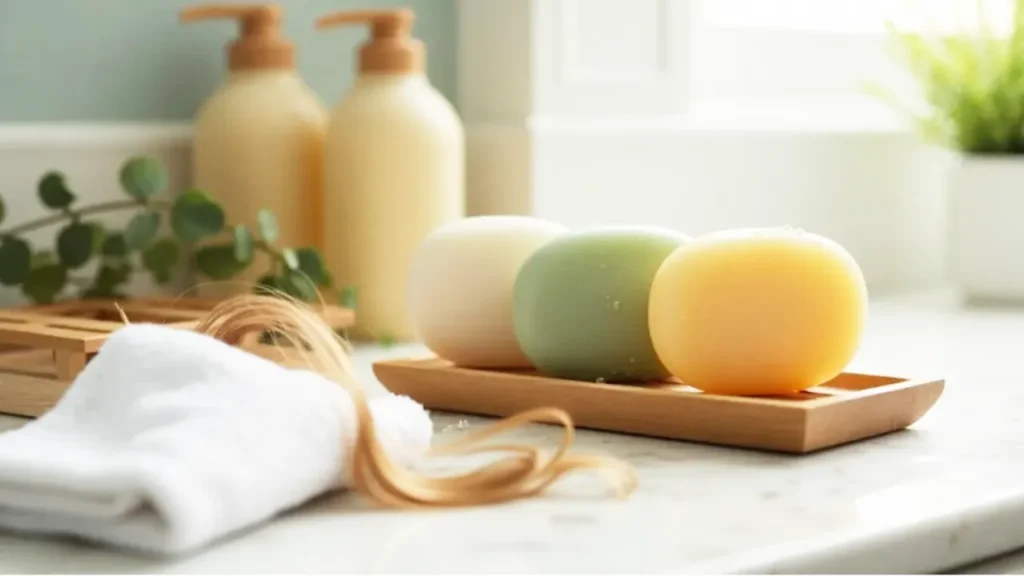
Now for the conditioner bar. Wet it and rub it gently between your hands or straight onto the ends of your hair. Unlike shampoo, you don’t want to apply conditioner directly to your scalp; focus on the mid-length to the tips. That’s where your hair needs the most moisture.
If you have very dry or thick hair, you might want to leave a little in instead of rinsing it all out. Some people wonder how to use conditioner bars on curly or textured hair, and the trick is to detangle gently with your fingers while the product is still in. It adds slip and softness.
Once you’re done, rinse again. You’ll notice your hair feels softer and more manageable. That’s the magic of learning how to use shampoo bars and solid conditioners the right way. And if you’re like me, you’ll love how clean your shower looks without all those plastic bottles.
Knowing how to wash hair with bar shampoo and conditioner may take a few tries, but once you find your rhythm, it feels effortless. Your scalp stays balanced, your hair feels lighter, and your routine becomes so much simpler.
How Often Should You Use Them?
Okay, let’s get real for a second, how often to wash hair with a shampoo bar is one of the biggest questions I had when I first ditched bottled shampoo. I mean, is it daily?
Every other day? Once a week? The answer?
It honestly depends. But don’t worry, I’ve been through the trial-and-error phase, and I’ll walk you through what I’ve learned.
When I first started using solid bars, I thought I had to use them just as often as my liquid shampoo. But that was a mistake. I ended up overwashing, and my hair felt dry and frizzy.
That’s when I realized that using shampoo and conditioner bars isn’t just about technique, it’s also about timing.
Most people do best washing their hair 2–3 times a week with a bar. If you have oily hair like I do, you might lean toward three. But if your hair is dry, curly, or color-treated, less is more. Think once or twice a week, max.
Now, here’s something a lot of beginners don’t realize: there’s often an adjustment period when you switch to shampoo bars. Your scalp might be used to the harsh detergents in liquid shampoos, so when you switch to a gentler, sulfate-free bar, your hair might feel… different.
Mine felt kind of waxy at first. That’s normal! Give it at least two weeks before deciding if a bar isn’t working for you. This is why so many people say, A shampoo bar ruined my hair, but in truth, it’s usually just a detox phase.
If you’re wondering how to use a shampoo bar on long hair, frequency matters even more. Long hair tends to be drier at the ends, so overwashing can lead to breakage. Instead, focus on cleansing the scalp and let the shampoo rinse gently over the length. Trust me, it makes a huge difference.
Pro Tip: If your hair starts to feel heavy, it might not mean you’re using it too often; it could mean you’re not rinsing well enough, especially in hard water areas.
Once you figure out how to wash hair with bar shampoo and space your washes based on your hair type, it all clicks. Your hair gets shinier, softer, and easier to manage. Plus, you’re making the most of your solid shampoo by not going through it too quickly.
Still unsure? Don’t stress. Start with every other day and adjust from there. There’s no one-size-fits-all answer when it comes to how often to use shampoo bars and solid conditioners, just like no two heads of hair are the same.
Where Can You Buy Shampoo and Conditioner Bars?
So, you’ve decided to give solid hair care a shot, but now you’re thinking, Where can I buy bar shampoo and conditioner that works for me? I had the same question when I started.
I didn’t know where to begin, and the options were overwhelming. But after trying a few duds (and a few total gems), here’s what I’ve learned.
Online: Easy, Convenient, and Full of Choices
If you’re a scroll-and-shop kind of person, online is your best friend. Sites like Amazon, Etsy, and official brand websites offer tons of variety.
You can search by hair type, ingredients, or reviews, and you’ll often find bundle deals or sampler packs (which I highly recommend if you’re unsure what to try first).

I once found a sulfate-free, pH-balanced shampoo bar with shea butter and peppermint oil through a small Etsy shop, and it ended up being better than any store-bought option I’d tried.
And remember: natural doesn’t always mean right for your hair, so always match the formula to your needs.
Local Shops: Try Before You Commit
Want to smell the bar before buying it? Same. That’s why I love checking out local health food stores, eco boutiques, or even farmers markets.
Some places even offer testers, and talking to real people about their favorites can give you insights you wouldn’t get from a product page.
How to Read the Labels
Whether you’re shopping in person or online, learning to decode ingredients is a game-changer. If you’re wondering what makes a good shampoo bar, look for nourishing oils like argan, jojoba, or
coconut, and ingredients like aloe, clay, or essential oils, depending on your hair type.
Whether you’re going the online route or shopping local, finding the best bar shampoo and conditioner takes a bit of trial and error, but once you find the one, it’s honestly hard to go back.
And now that you know where to buy bar shampoo and conditioner, your solid hair care journey is already off to a strong start.
Transitioning to Shampoo and Conditioner Bars
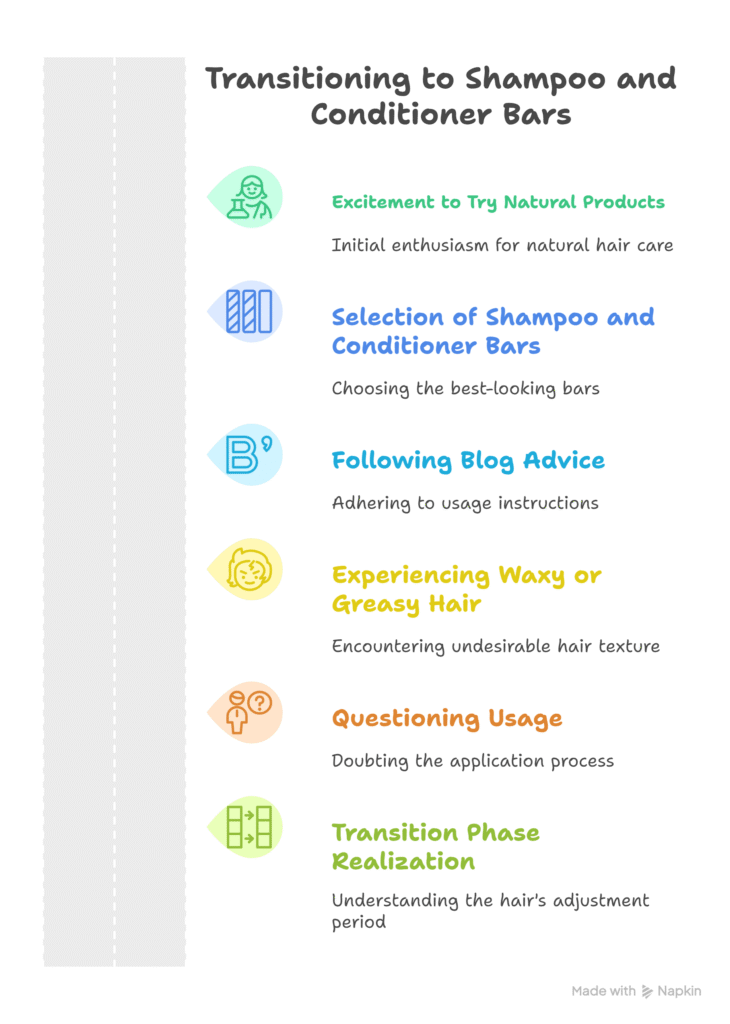
Let me guess, you were super excited to ditch the bottles and try something more natural. You read all the benefits, picked what looked like the best bar shampoo and conditioner, and followed every blog’s advice on how to use shampoo and conditioner bars.
But then… your hair felt waxy. Greasy. Or worse, like straw. And now you’re thinking,
Did I do something wrong?
Did this shampoo bar ruin my hair?”
I’ve been there. And trust me, it doesn’t mean you failed. It just means your hair (and scalp) are in a transition phase.
First: It’s Probably Not the Bar, It’s the Detox
Here’s the deal. If you’ve used commercial liquid shampoos for years, your scalp is used to sulfates and silicones. Those give that “squeaky clean” feeling, but they also strip natural oils.
So when you switch to a sulfate-free shampoo bar, your scalp panics a little. It might overproduce oil, or your hair might feel heavy or coated. Normal.
This detox period usually lasts 1 to 3 weeks. It’s not fun, but it’s temporary. During this time, learning how to use a shampoo bar correctly makes a huge difference. I had to remind myself: more water, more patience, and lighter hands.
Second: Check Your Water
One thing I didn’t expect to affect my hair? My tap water. If you live in an area with hard water (lots of minerals), it can mess with how your shampoo bar lathers and rinses. You might notice residue or dullness.
That’s when I started using an apple cider vinegar rinse once a week, just 1 tablespoon in a cup of water. It helped clarify my scalp and brought back shine without stripping moisture.
Also, rinse thoroughly. Like, thoroughly. If you’re wondering how to wash hair with bar shampoo and feel like it’s not rinsing clean, chances are you’re either not using enough water or rushing the rinse.
This is especially important if you’re using a shampoo bar on long hair; those ends need a little extra attention.
Third: Maybe the Bar Isn’t Right for You
This one’s tough love, but important. Sometimes it’s not you, it’s the bar. Just like with skincare, what works for someone else might not work for you.
Ask yourself:
- Is the bar too rich for your fine or oily hair?
- Is it too light for your thick or curly hair?
- Does it have ingredients you’re sensitive to (like essential oils or coconut oil)?
There are many types of bars out there, some focus on hydration, others on deep cleaning. Learning how to choose a shampoo bar for your hair type is just as important as knowing how to use shampoo bars and solid conditioners in the shower.
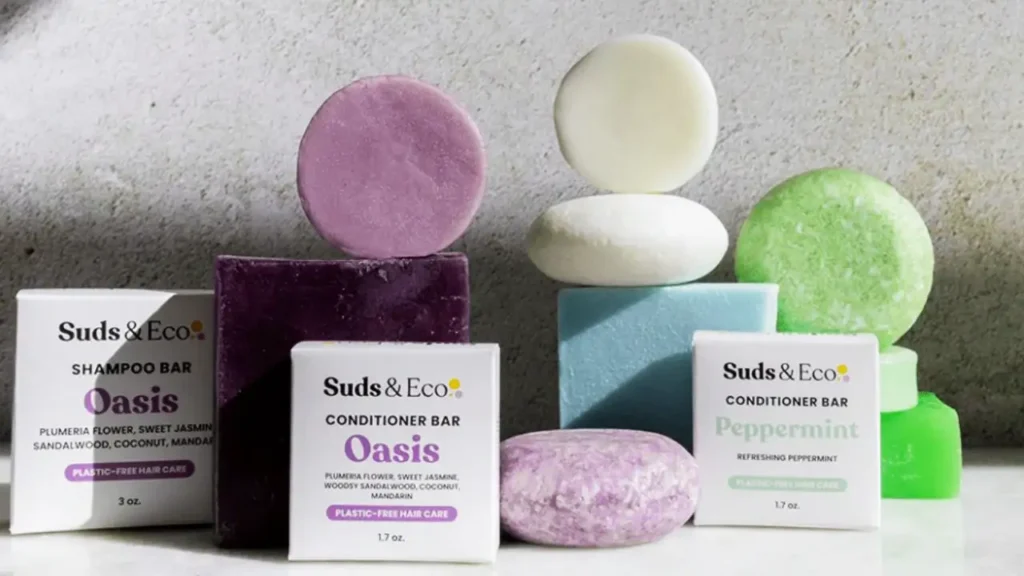
If your bar is making things worse even after the adjustment period, don’t give up, just switch to another formula. Look for one that’s pH-balanced, sulfate-free, and matched to your hair needs.
Fourth: Conditioner Matters Too
Let’s not forget the conditioner bar. If your hair feels rough or tangly, it might not be getting enough moisture. Many people (including me at first) don’t apply conditioner bars correctly.
Remember: apply only from mid-length to ends, and let it sit for a minute or two. You can even leave a bit in for dry or curly hair. That’s part of making the most of your solid conditioners; it’s all in the application.
And please, don’t skip conditioner entirely. Even oily hair needs it, just apply lightly and rinse well.
Quick Fixes If You’re Struggling:
- Try an ACV rinse once a week to clarify.
- Use more water when lathering and rinsing.
- Store your bars properly (a dry bar lasts and performs better).
- Give it at least two weeks before judging the results.
- Switch bars if the ingredients don’t suit your hair type.
Learning how to use shampoo and conditioner bars is like learning to ride a bike; it might be awkward at first, but once you get the hang of it, you won’t look back.
And hey, if you’ve tried everything and still don’t love them, that’s okay too. What matters most is finding a routine that works for you.
But if you’re willing to stick it out, tweak your technique, and maybe switch to a better-suited bar, I promise, it’s worth it. You’ll soon see shinier, softer, more balanced hair.
Tips to Get the Most Out of Your Bars
Let me tell you, figuring out how to use shampoo and conditioner bars felt like learning a new language at first. But once I got the hang of it, I wondered why I hadn’t made the switch sooner. These little bars might look simple.
But the way you use and store them makes all the difference in how well they work (and how long they last!).
Here are my favorite tried-and-true tips for making the most of your solid shampoo and conditioner, so you get shiny, soft, happy hair every time.
Let Them Breathe (Literally)
After you wash your hair, don’t just toss your brush back into a puddle of water. I made that mistake early on, and let me tell you, nothing melts faster than a soggy shampoo bar! Use a slotted soap dish or, mesh bag.
This might sound basic, but it’s key to making the most of your solid shampoo. A dry bar = a happy bar.
Water Is Your Secret Weapon
A common mistake when learning how to use a shampoo bar correctly is not using enough water. I used to rub the bar forever, wondering why it wasn’t lathering. Turns out, all I needed was more water and a gentle hand.
Wet your hair thoroughly. Wet the bar. Then either rub it between your hands to build a lather or swipe it gently on your scalp.
Conditioner = Game Changer
I’ll admit it, I used to skip the conditioner bar thinking it wasn’t necessary. Big mistake. If your hair feels rough or tangles too easily, it might be because you’re not using the conditioner right, or at all.
Don’t Wash Too Often
When I first switched, I was using my bar daily, just like I used to with liquid shampoo. But that dried my hair out fast. Now I wash about 2–3 times a week, depending on how my hair feels.
Travel Smart
One of the best things about switching to bars?
No more spilled bottles in my suitcase. But if you just toss a damp bar into a closed container, you’ll come back to a mushy mess.
Whether you’re still learning how to wash hair with bar shampoo or you’ve already mastered how to use shampoo bars and solid conditioners, these little habits make a huge impact.
So getting the most out of your shampoo and conditioner bars isn’t just about how you wash; it’s about how you store, apply, and care for them, too.
Once you nail the basics, everything clicks. Your bars last longer, your hair looks better, and your routine feels simpler and cleaner.
Final Thoughts: Small Change, Big Impact
Switching to shampoo and conditioner bars may seem small. But it can make a big difference. For me, it changed how my hair feels and how I care for the planet.
At first, I was confused. I didn’t know how to use shampoo and conditioner bars the right way. My hair felt strange. I even thought, This shampoo bar ruined my hair. But I kept trying. I learned step by step. And over time, it worked.
Now my hair feels clean and soft. I use less water. I waste less product. And no plastic bottles are cluttering my shower.
If you’re wondering how to use bar shampoo and conditioner, don’t worry. It takes a little time. Start simple. Wet your hair. Lather the bar. Rinse well. Then use the conditioner bar on your ends. That’s it.
Still unsure? That’s okay. Try washing every other day. Let your bars dry after each use. Keep them in a draining soap dish. These small habits help your bars last longer.
Also, be kind to yourself. Your hair may take a week or two to adjust. That’s normal. It doesn’t mean the bar is bad. It just means your hair is learning to work without harsh stuff.
If you have long hair, curly hair, or an oily scalp, choose bars made for your type. That’s the key to making the most of your solid shampoo and solid conditioners.
So if you’re asking, Where can I buy bar shampoo and conditioner?, check online or in local eco stores. There are great options out there.
Once you learn how to use shampoo bars and solid conditioners, you may not go back to bottles. It feels good, it works well, and it helps the earth.
Give it a try. Your hair and the planet will thank you.
FAQ: How to Use Shampoo and Conditioner Bars
Quest: How often should I wash with a shampoo bar?
Ans: Most people wash 2 to 3 times a week. If your hair is dry or curly, wash less often. If it’s oily, you may need to wash more. Test what works best for you.
Quest: Can I use a shampoo bar on long hair?
Ans: Yes! Rub the bar on your scalp and use the lather to wash the length. Always rinse well. Use a conditioner bar on the ends.
Quest: What if a shampoo bar ruined my hair?
Ans: This can happen during the switch. Your hair may feel heavy or waxy at first. Try a rinse with apple cider vinegar or a gentle clarifying wash. Make sure to rinse well and pick a bar that fits your hair type.
Quest: How do I store my bars?
Aans: Keep bars dry between uses. Use a draining soap dish, mesh bag, or tin with holes. Don’t let them sit in water.
Quest: Do solid bars work for all hair types?
Ans: Yes, if you choose the right one. Some bars are made for curls. Others are for oily or fine hair. Try a few to find your best match.
As an Amazon Associate, I earn from qualifying purchases

